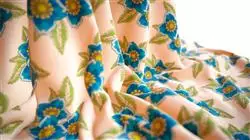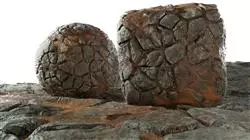University certificate
The world's largest faculty of information technology”
Introduction to the Program
Acquire the best computer and technological skills to achieve the best texturing processes through this online degree"

A brief tour through the History of Art would show the importance of texturing and its evolution in any artistic production. Bringing light, texture and a sense of superior realism is the achievement that any artist, designer or programmer of animation or video games would like to achieve for their projects. This process has acquired increasingly complex dimensions in the technological field, always in the search for a simpler process but with better and more professional results.
This Professional master’s degree in 3D Texture Modeling has been designed so that the designer can specialize in the texturing process and in the most complete tools and software to master this technique, such as Zbrush, Substance Painter or Unreal Engine. The content starts, in fact, focused on the use of 3DS Max, one of the most widely used programs in the design, animation and audiovisual production industry.
Next, the educational plan goes through the texturing blocks, dedicated to explaining the types of textures and materials that are currently being used. The training delves into the process of preparing the model, from the creation of coordinates to the mapping and rendering of the model at the end, allowing to show the work with different sets of lights and a great image quality. For this purpose, the Marmoset Toolbag tool will be explored.
The student will have a module dedicated to exporting in Unreal Engine, a development engine that allows to build an animation or simulation. Here, you will learn how to handle yourself with ease within the program, with special emphasis on lightmaps, the light maps that greatly influence the quality of the final work and the creation of frames.
This Professional master’s degreeis taught entirely online, in order to favor the autonomous and involved learning of the students. Thanks to the monitoring and explanations of an excellent teaching staff, made up of professionals of the highest level, you will have the pedagogical resources and multimedia material always available on the virtual platform.
Without leaving aside your personal or professional projects, specialize in three-dimensional modeling and texturing thanks to this fully online Professional master’s degree"
This Professional master’s degree in 3D Texture Modeling contains the most complete and up-to-date scientific program on the market. The most important features include:
- The development of case studies presented by experts in 3D Texture Modeling
- The graphic, schematic, and eminently practical contents with which they are created, provide practical information on the disciplines that are essential for professional practice
- Practical exercises where self-assessment can be used to improve learning
- Its special emphasis on innovative methodologies
- Theoretical lessons, questions to the expert, debate forums on controversial topics, and individual reflection assignments
- Content that is accessible from any fixed or portable device with an Internet connection
Without leaving aside your personal or professional projects, specialize in three-dimensional modeling and texturing thanks to this fully onlineProfessional master’s degree"
The program’s teaching staff includes professionals from the sector who contribute their work experience to this training program, as well as renowned specialists from leading societies and prestigious universities.
The multimedia content, developed with the latest educational technology, will provide the professional with situated and contextual learning, i.e., a simulated environment that will provide immersive training programmed to train in real situations.
This program is designed around Problem-Based Learning, whereby the professional must try to solve the different professional practice situations that arise during the academic year. For this purpose, the student will be assisted by an innovative interactive video system created by renowned and experienced experts.
Learn, totally online, the best texturing tools and software, as well as their application in three-dimensional modeling"

Take advantage of this opportunity to continue expanding your knowledge in 3D Texture Modeling in a comfortable, easy and practical way"
Why study at TECH?
TECH is the world’s largest online university. With an impressive catalog of more than 14,000 university programs available in 11 languages, it is positioned as a leader in employability, with a 99% job placement rate. In addition, it relies on an enormous faculty of more than 6,000 professors of the highest international renown.

Study at the world's largest online university and guarantee your professional success. The future starts at TECH”
The world’s best online university according to FORBES
The prestigious Forbes magazine, specialized in business and finance, has highlighted TECH as “the world's best online university” This is what they have recently stated in an article in their digital edition in which they echo the success story of this institution, “thanks to the academic offer it provides, the selection of its teaching staff, and an innovative learning method aimed at educating the professionals of the future”
A revolutionary study method, a cutting-edge faculty and a practical focus: the key to TECH's success.
The most complete study plans on the university scene
TECH offers the most complete study plans on the university scene, with syllabuses that cover fundamental concepts and, at the same time, the main scientific advances in their specific scientific areas. In addition, these programs are continuously being updated to guarantee students the academic vanguard and the most in-demand professional skills. In this way, the university's qualifications provide its graduates with a significant advantage to propel their careers to success.
TECH offers the most comprehensive and intensive study plans on the current university scene.
A world-class teaching staff
TECH's teaching staff is made up of more than 6,000 professors with the highest international recognition. Professors, researchers and top executives of multinational companies, including Isaiah Covington, performance coach of the Boston Celtics; Magda Romanska, principal investigator at Harvard MetaLAB; Ignacio Wistumba, chairman of the department of translational molecular pathology at MD Anderson Cancer Center; and D.W. Pine, creative director of TIME magazine, among others.
Internationally renowned experts, specialized in different branches of Health, Technology, Communication and Business, form part of the TECH faculty.
A unique learning method
TECH is the first university to use Relearning in all its programs. It is the best online learning methodology, accredited with international teaching quality certifications, provided by prestigious educational agencies. In addition, this disruptive educational model is complemented with the “Case Method”, thereby setting up a unique online teaching strategy. Innovative teaching resources are also implemented, including detailed videos, infographics and interactive summaries.
TECH combines Relearning and the Case Method in all its university programs to guarantee excellent theoretical and practical learning, studying whenever and wherever you want.
The world's largest online university
TECH is the world’s largest online university. We are the largest educational institution, with the best and widest online educational catalog, one hundred percent online and covering the vast majority of areas of knowledge. We offer a large selection of our own degrees and accredited online undergraduate and postgraduate degrees. In total, more than 14,000 university degrees, in eleven different languages, make us the largest educational largest in the world.
TECH has the world's most extensive catalog of academic and official programs, available in more than 11 languages.
Google Premier Partner
The American technology giant has awarded TECH the Google Google Premier Partner badge. This award, which is only available to 3% of the world's companies, highlights the efficient, flexible and tailored experience that this university provides to students. The recognition as a Google Premier Partner not only accredits the maximum rigor, performance and investment in TECH's digital infrastructures, but also places this university as one of the world's leading technology companies.
Google has positioned TECH in the top 3% of the world's most important technology companies by awarding it its Google Premier Partner badge.
The official online university of the NBA
TECH is the official online university of the NBA. Thanks to our agreement with the biggest league in basketball, we offer our students exclusive university programs, as well as a wide variety of educational resources focused on the business of the league and other areas of the sports industry. Each program is made up of a uniquely designed syllabus and features exceptional guest hosts: professionals with a distinguished sports background who will offer their expertise on the most relevant topics.
TECH has been selected by the NBA, the world's top basketball league, as its official online university.
The top-rated university by its students
Students have positioned TECH as the world's top-rated university on the main review websites, with a highest rating of 4.9 out of 5, obtained from more than 1,000 reviews. These results consolidate TECH as the benchmark university institution at an international level, reflecting the excellence and positive impact of its educational model.” reflecting the excellence and positive impact of its educational model.”
TECH is the world’s top-rated university by its students.
Leaders in employability
TECH has managed to become the leading university in employability. 99% of its students obtain jobs in the academic field they have studied, within one year of completing any of the university's programs. A similar number achieve immediate career enhancement. All this thanks to a study methodology that bases its effectiveness on the acquisition of practical skills, which are absolutely necessary for professional development.
99% of TECH graduates find a job within a year of completing their studies.
Professional Master’s Degree in 3D Texture Modeling
.
Dive into the fascinating world of 3D modeling and digital texturing with our Professional Master's Degree in 3D Texture Modeling from TECH Global University. Discover how to create realistic and visually stunning virtual environments with the latest techniques and tools in the field of computer science. Our postgraduate course is taught through online classes, which gives you the flexibility to study from anywhere and adapt your schedule to your needs. Through our virtual learning platform, you will have access to course materials, interactive lectures and practical tutorials, allowing you to advance in your academic development in a comfortable and efficient way. At TECH Global University, we are proud to offer a high quality online education. You will be guided by experienced professionals in the field of 3D modeling and texturing, who will provide you with the knowledge and skills necessary to excel in this ever-evolving area.
They will provide you with the knowledge and skills necessary to excel in this ever-evolving area.
Study a postgraduate degree on textures in 3D modeling
.
The Professional Master's Degree in 3D Texture Modeling will allow you to explore advanced texturing and modeling techniques, from generating realistic materials to designing characters and virtual environments. You will learn how to use specialized 3D modeling software, as well as how to apply texturing and mapping techniques to add detail and depth to your creations. With the rise of virtual reality, the entertainment and video game industry demands more and more professionals trained in the art of 3D modeling and texturing. With our Professional Master's Degree, you will be prepared to face the challenges of this exciting field and take advantage of the career opportunities it offers. If you want to turn your passion for 3D modeling into a successful career, our Professional Master's Degree in 3D Texture Modeling is the perfect program for you. Join TECH Global University and acquire the skills you need to excel in the digital art field, and open doors in the film industry, video games, architecture and more.







